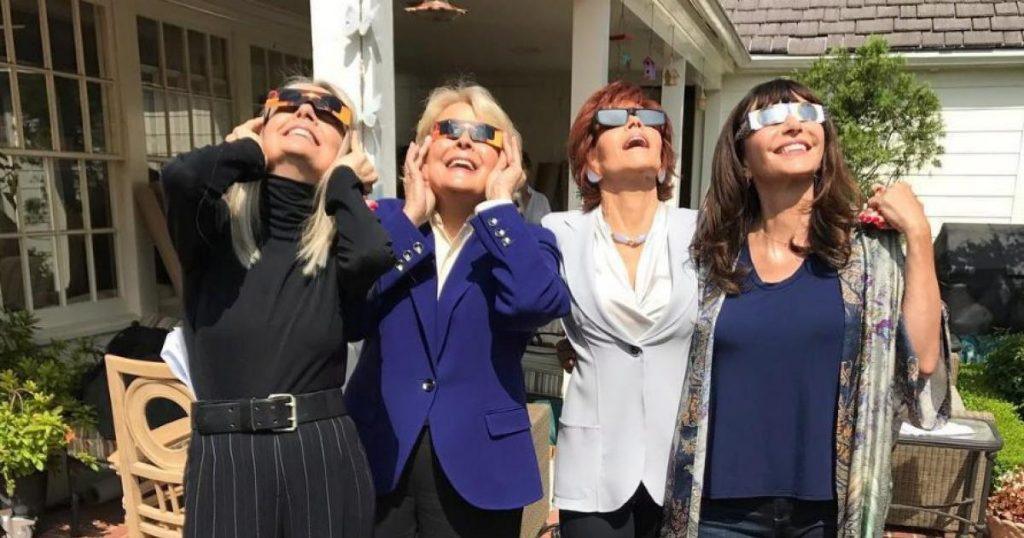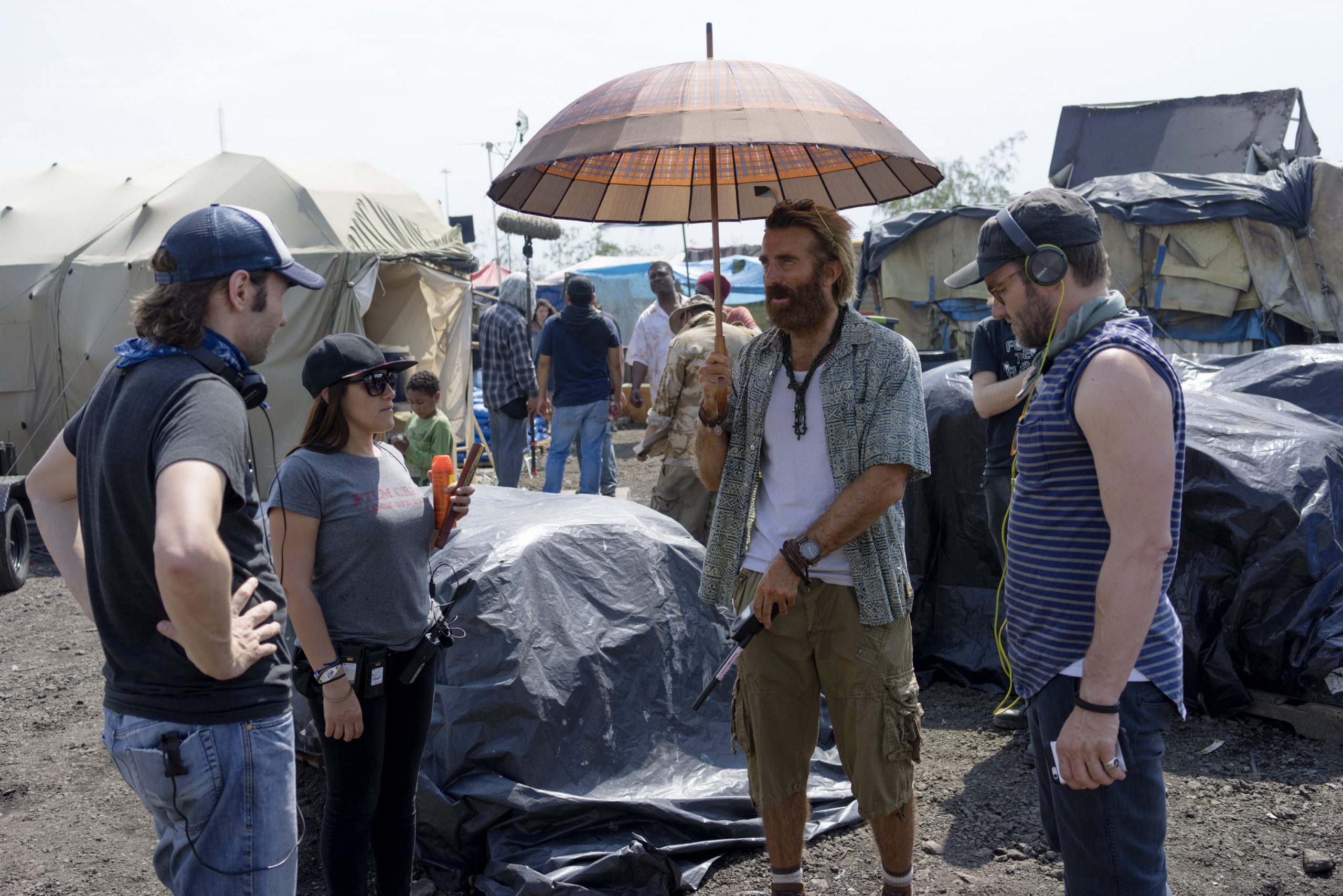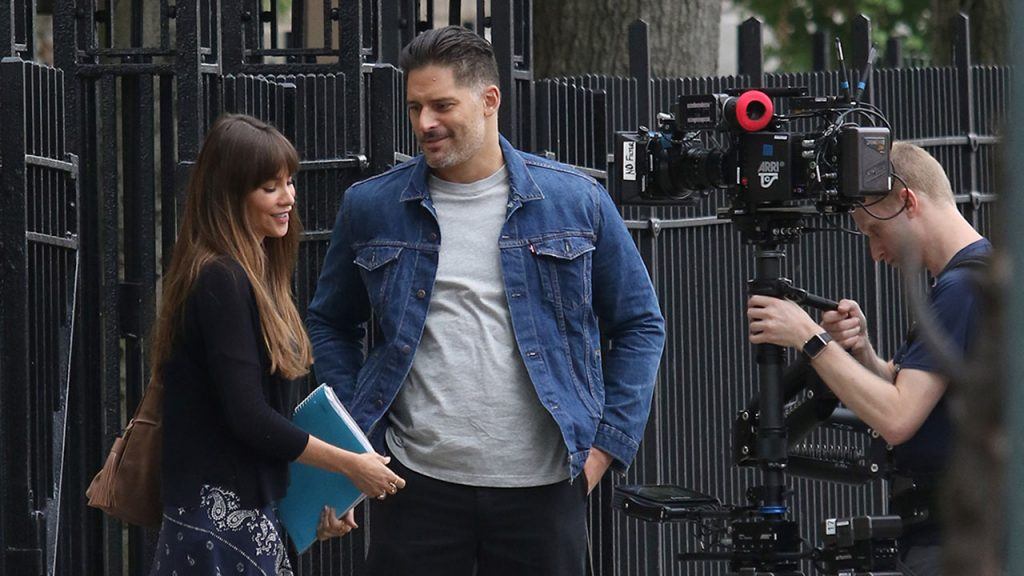
Big Cities
1. Atlanta, Georgia
“Georgia has the most robust incentive program in the country,” Christine Dudley, director of the Illinois Film Office, asserted to a Crain’s business news reporter in 2017. “They incentivize anything that walks across the street.” That may be overstating it, but there’s no question that in 2008 Georgia’s new incentive program sparked a rush to the Peach State with its 20 percent tax credit (minimum $500,000 spend) and an additional 10 percent available for productions that add in promotions. By 2014, Pinewood had built a campus in Atlanta with six sound stages; two expansions followed, and the 700-acre site now boasts 18 sound stages and just under 1 million feet of covered space and has hosted films such as Captain America: Civil War and Ant-Man. Film and TV productions spent $2.65 billion in Georgia in fiscal 2017, according to the Georgia Department of Economic Development.
Lee Thomas, deputy commissioner of Georgia’s FM & DEO Office, summarized the way that the influx has impacted local vendors when speaking with U.S. News & World Report in October: “I went to get contact lenses one day, and they said they were so busy because they had to be on set to outfit The Walking Dead and The Vampire Diaries with contact lenses.” One of those Vampire Diaries creatives, Brett Matthews, was recently tapped to be a new showrunner for MTV’s series reboot of Scream, which has ditched New Orleans for its upcoming third season in favor of Hotlanta. When Season Three premieres in March, 2018 (with a new cast and backed by executive producer Queen Latifah) the show will have a Southern flavor that goes with being Atlanta-produced.
“For me, it was a pretty easy decision—this is where I wanted to bring the show,” Matthews says. “It made sense for the story, I know the infrastructure Atlanta has, and I know the crew base. It’s a place with multiple disparate locations, the weather’s okay, there’s great infrastructure, your dollar goes far, and of course the state rebate allows us to make the show on the right budget. It’s not just the rebate—Atlanta is a great city in its own right—but it makes a big impact on the bottom line.” Matthews says that he’d advise young actors to go to Atlanta and see what all the fuss is about—“get a bunch of credits on your resume”—and enjoy “a lot of life and a lot of culture” that’s pumping through the city: the cost of living is only about 1.8 percent above national average.
“There’s a whole industry that’s sprung up around the city—you’ve got some highly-skilled professionals across all departments in terms of crew. It’s kind of a Hollywood East scenario, which is awesome.” One thing Matthews says he won’t do when it comes to Scream is force Atlanta to double for another location. “It’s Atlanta for Atlanta, which to me is the fun of it. I’ve spent a lot of time in the city over the years and I didn’t want to fake it for any other place. One of the pleasures of the show was that we shot it entirely on location and we could really make the show and the story about Atlanta.”

Letitia Wright, Lupita Nyong’o, Angela Bassett, and Martin Freeman on the Atlanta set of Black Panther. Photograph by Matt Kennedy, courtesy of Marvel Studios.
2. Vancouver, British Columbia, Canada
To locate the success story of the moment, it’s probably smart to just follow The Rock: He’s been in British Columbia these past months, shooting the disaster film Skyscraper alongside Canada’s own Neve Campbell. Vancouver native Ryan Reynolds was also spotted around town, filming the inevitable sequel to 2016’s superhero smash Deadpool. These are just two of 338 productions that qualified for B.C.’s tax credits this year, a rise of 41 from last year, according to numbers compiled by Creative B.C. in September; their forecast estimated more than $2.6 billion in film expenditures for B.C. in 2017, up 35 percent from 2015-2016. Vancouver was also host to two dozen series in 2017, including six new pilots. As of December there have been 189 commercials and 87 miscellaneous projects produced.
Vancouver’s neo-Hollywood reputation is well-earned, with its blossoming infrastructure of 2.5 million square feet of stage space on over 100 stages, the world’s largest VFX/animation cluster, 17 educational institutions with motion picture production as a discipline, and 3,000 graduates per year entering media from B.C.’s post-secondary programs, as well as abundant woodsy-green shooting locations (see: any X-Men film).
But what about the indie scene?
Vancouver is, in fact, proving to be a magnet for those who want to tell intimate, non-Deadpool-ish stories about real people facing life’s challenges. Among them is director Mina Shum, who shot indie drama Meditation Park in East Vancouver last spring.
“I shot the film two blocks from where I live, in East Vancouver, which is a mix of immigrants, old and new,” says Shum. “The opening shot is Maria hanging up her laundry, beige underthings, and when we got to shooting, there wasn’t enough laundry to fill the line the way I wanted. Our set decorator ran door to door and eventually collected beige briefs from elders living down the street—I felt that was very Vancouver.”
Shum describes Vancouver’s film community as a “welcoming place” and a “strong indie community of filmmakers” and heaps praise on the suppliers and partners who keep things running on time for local productions. “Crews are happy to work on a local vision,” she says. “They feel like they are sharing something they relate to, a little of their story. I had an excellent, welcoming crew—seasoned veterans who were making less money than if they worked for Hollywood, but they wanted to do our film. I’m writing a sci-fi chamber piece next, and when we shoot we’ll definitely go to a few far-off locations necessary to the story, but we’ll do most of it here in a studio, where we’ll build the world of the film.”

Anna Kendrick shooting Disney’s Noelle in Vancouver in 2017. The holiday family film is slated to premiere November 2019.
3. Los Angeles, California
“Los Angeles has an interesting energy because the people that flock here are doing so to pursue their dreams, and so there’s optimism in the air,” says Kailey Marsh, an L.A.-based manager, producer, and founder of the BloodList, an annual survey of the town’s best un-produced horror scripts. “You never know who you’re going to meet or what will happen to you here, and that can be a good thing or a bad thing. It’s a place where it’s hard to stay and it’s also hard to leave.”
That feeling of push-pull that the City of Angels evokes, drawing you in even as it makes you want to hop on a plane to somewhere else, is probably older than Raymond Chandler and is blissfully unaffected by the city’s constant reinvention and its quarterly reports. Still, money never sleeps—with California’s $330 million a year incentive set to expire after the 2019-2020 fiscal year, Mayor Garcetti made news over summer by vowing to push the legislature to increase the figure to $500 million. The state tax credit is currently set at 20 percent, with the former lottery system for applicants scrapped in favor of a jobs-created metric. Producers are also eligible for another five percent if they relocate a series (Fox’s devil drama Lucifer is an example, having relocated from Vancouver in 2017 along with Legion), shoot on location outside the L.A. zone, or do their scoring and/or VFX in state.
L.A.’s immeasurably rich film history also serves as a guarantor that among each new generation of moviemakers there will be some, like Paul Thomas Anderson, Michael Mann, and Kathryn Bigelow, who want to tell specifically L.A stories, and are willing to jump through whatever hoops exist to film their stories in Hollywood. A current example may be Karyn Kusama, whose most recent film, 2015’s The Invitation, spun a tale of extreme insularity and decadence in the Hollywood Hills. Her forthcoming film, which began shooting in L.A. in the fall, is a Nicole Kidman-starring detective thriller, Destroyer. The siren call of La La Land to moviemakers is in no danger of fading out any time soon.

Diane Keaton, Candice Bergen, Jane Fonda, and Mary Steenburgen viewing the eclipse from the L.A. set of the upcoming film Book Club. Photograph by Candice Bergen.
4. Chicago, Illinois
Chicago may have doubled for Gotham in Christopher Nolan’s first two Dark Knight films, but its own personality is hard to disguise even with Hollywood magic. Joe Chappelle, executive producer of NBC’s Chicago Fire, also filmed a thriller in the city this past summer called The Pages, with Jamie Lee Curtis, with a do-it-locally ethos: Chicago locals were set to account for 80 percent of speaking roles and 90 percent of the budget was to spend in-city, while Filmworkers Club, a Chicago post house, was contracted to handle VFX. Steve McQueen’s heist film Widows also laid down track in the city over summer, with Liam Neeson starring.
Chicago’s prestigious documentary house, Kartemquin Films, also had a big 2017, with two films selected for Sundance 2018. Director Bing Liu’s Minding the Gap tells the story of Liu reconnecting with two childhood friends in Rockford, Illinois, while America to Me is a ten-part series from director Steve James, focusing on a special Chicago high-school. James previously directed Kartemquin’s biggest hit, the basketball documentary Hoop Dreams that shone a light on two underprivileged kids with big dreams. “We believe in the necessity of diverse voices—racially, culturally and geographically,” says Betsy Steinberg, Executive Director of Kartemquin. In fact, Illinois is currently the only state with diversity hiring provisions attached to its incentive.
“Chicago’s film industry has evolved in recent years into one of the country’s buzziest production cities,” says Steinberg. “The production scene is tight-knit, supportive and generous towards newcomers, while the cost of living is reasonable compared to the coasts. The city’s film creatives are extremely talented, with important stories to tell, and we share a commitment to ensuring business remains viable here.” Maintaining that viability will be partially a question of maintaining the 30 percent tax credit for film and television producers, a program up for renewal in 2021. (Minimum spend for projects over 30 minutes is $100,000).
With all it offers, there’s little chance of Chicago not remaining a top draw. Director Nash Edgerton, who shot parts of the upcoming Charlize Theron-starring action film Gringo in the city in 2016, sang Chi-Town’s praises: “It was so great shooting parts of Gringo in Chicago, especially as a good portion of the film is set there,” he said. “I loved the wonderful architecture, in particular work by Mies van der Rohe. I also got to enjoy my first Chicago deep dish. The other exciting thing for me was having Alan Ruck in the movie: I just couldn’t in good conscience have a film set in Chicago without including someone from one of my favorite films, Ferris Bueller’s Day Off.”

The Edgerton brothers and crew on the set of Gringo in Chicago. Photograph by Don Gray.
5. New York, New York
The city so nice they named it twice saw 2017 begin with Governor Andrew Cuomo signing a renewal of the state’s tax incentive program (30 percent refundable tax credits) until 2022, while a bill to create a “diversity credit” for writers and directors of color/women passed the legislature. Meanwhile, NYC Film Green, a voluntary environmental sustainability program for NYC’s film/TV industry that launched in pilot phase in 2016, went into action over the summer. “There’s never been a better time to work in film in New York,” says Mayor’s Office of Media and Entertainment (MOME) Commissioner Julie Menin. “Production levels continue growing, providing steady, high-quality employment to over 130,000 city residents. We’ve also rolled out programs over the last year to support aspiring and established film professionals, such as the “Made In NY” Postproduction Training Program, which prepares New Yorkers from diverse backgrounds for careers in animation, editing, graphics and visual effects.”
Menin also noted the planned Made in NY Campus, a 100,000 square ft. film and TV production facility announced by Mayor de Blasio in February 2017, and projected to open in 2020, in Sunset Park, Brooklyn. Another planned campus, dubbed the Michelangelo Campus, is a $100 million project in the Soundview section of the Bronx; it will boast nine soundstages in two buildings atop 10 now-vacant acres near the Bronx River. Queens-based York Studios, which is building the campus, is getting $36 million in conditional tax benefits over 25 years, and reportedly cited those tax credits as a motivator for the new project. Film production company Silvercup Studios also opened a third facility in the Port Morris section of the South Bronx in August, which encompasses 115,000 square ft. of space and four studios.
Other projects shot in NYC recently include the Megan Fox-starring Shadow Girl, which filmed in Brooklyn in the fall and is described as an unlikely romance. Moonlight director Barry Jenkins also called action on If Beale Street Could Talk, based on James Baldwin’s 1974 novel set in Harlem, with Diego Luna. If production-spotting isn’t your idea of entertainment, New York is still New York: it boasts 300 square miles of walkable city streets, parks, and iconic architecture, every kind of history and art museum, performance space and library one could ever wish for.

Sofia Vergara and Joe Manganiello filming Stano together in Queens. Photograph courtesy of Splash News.
Share:

